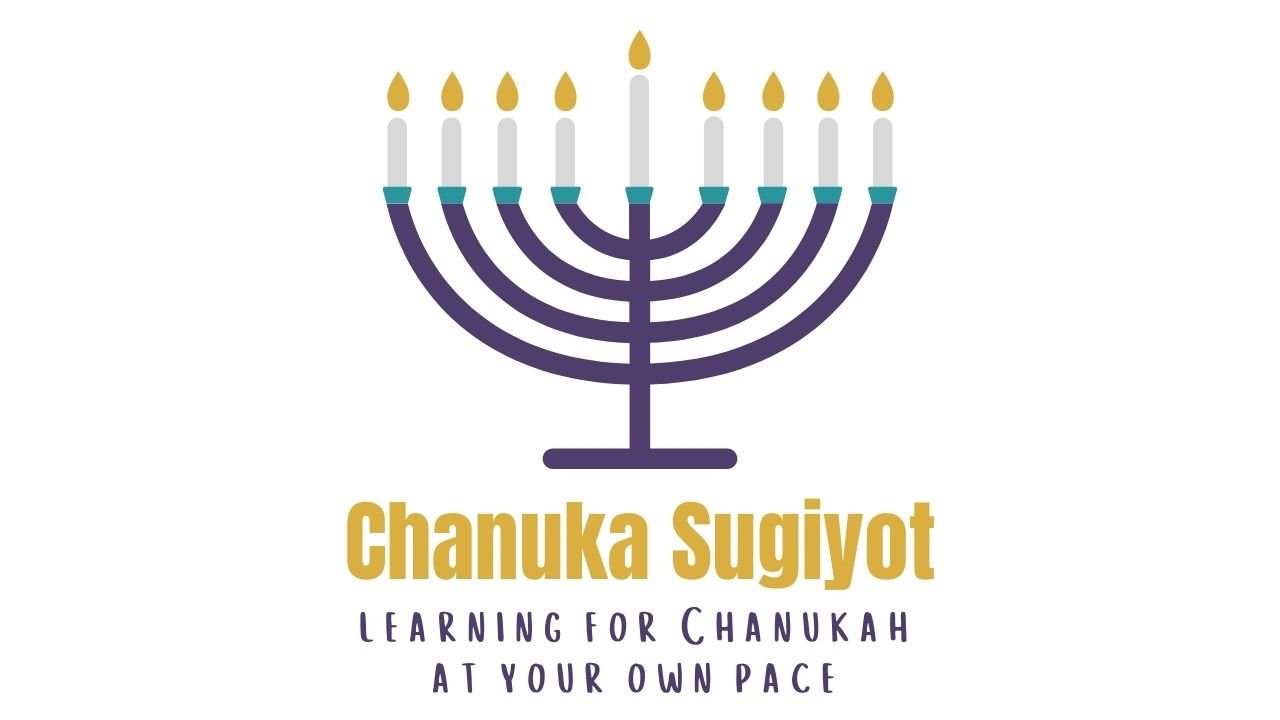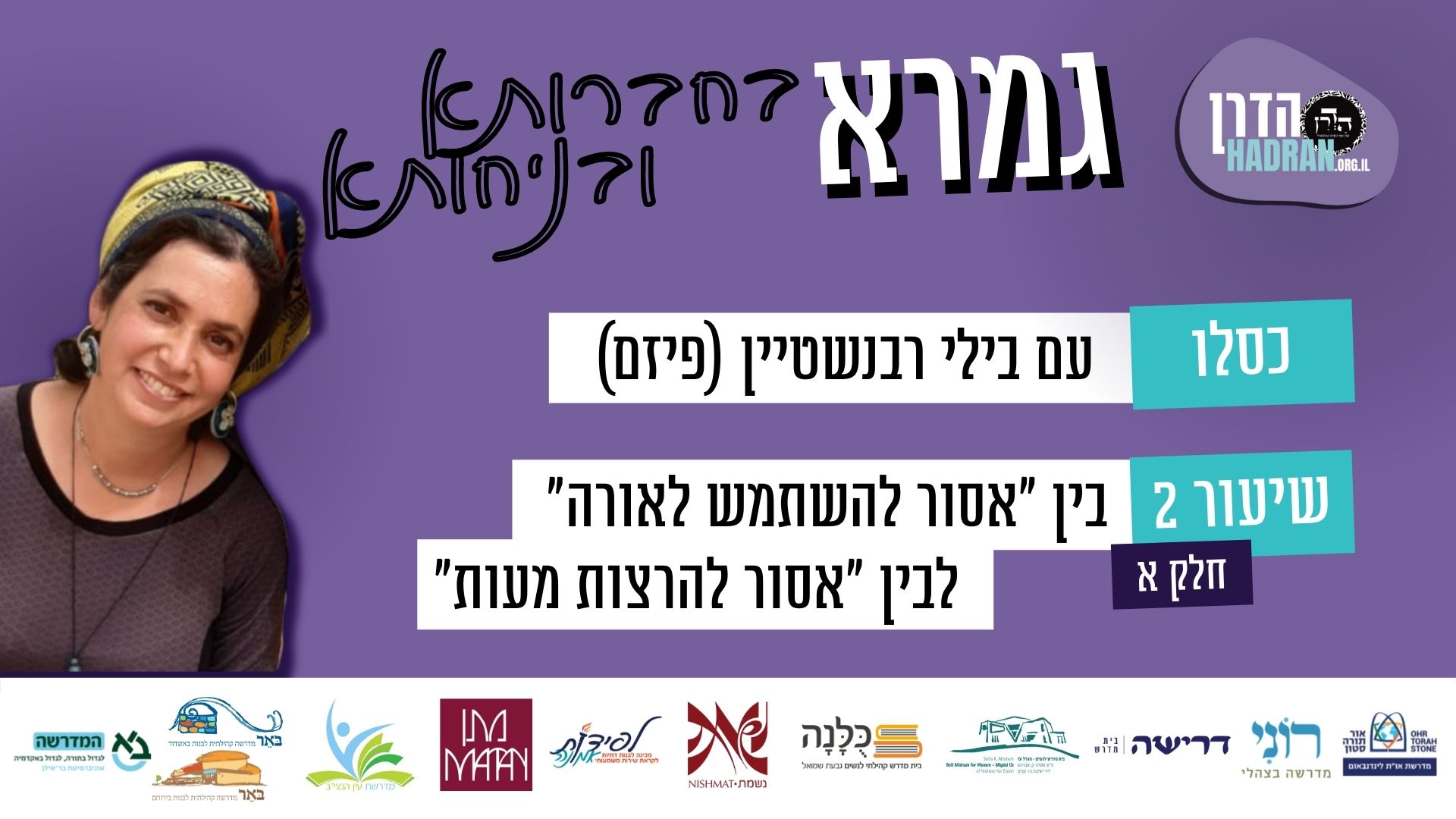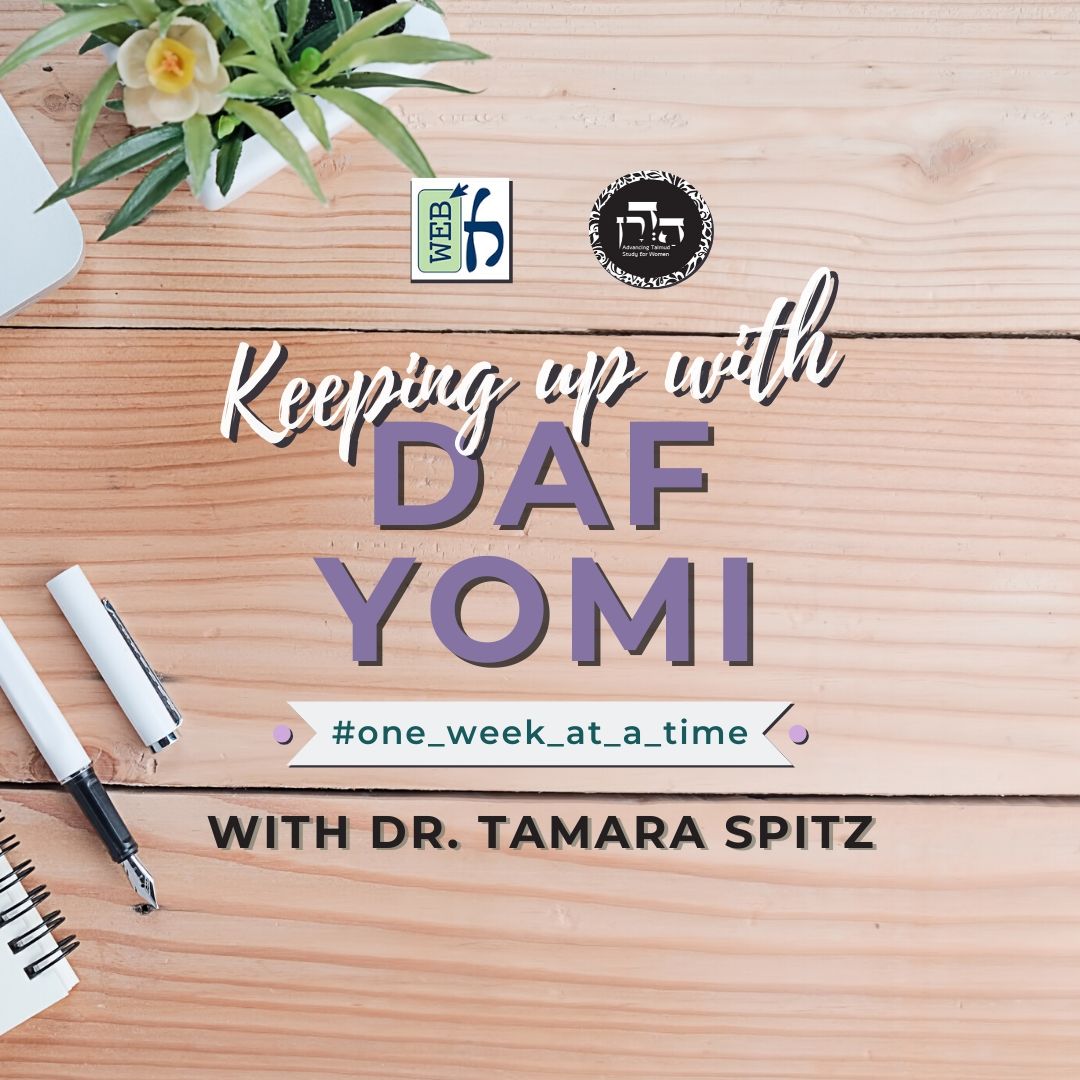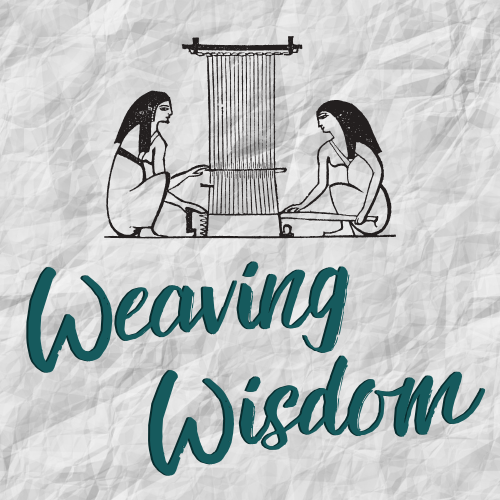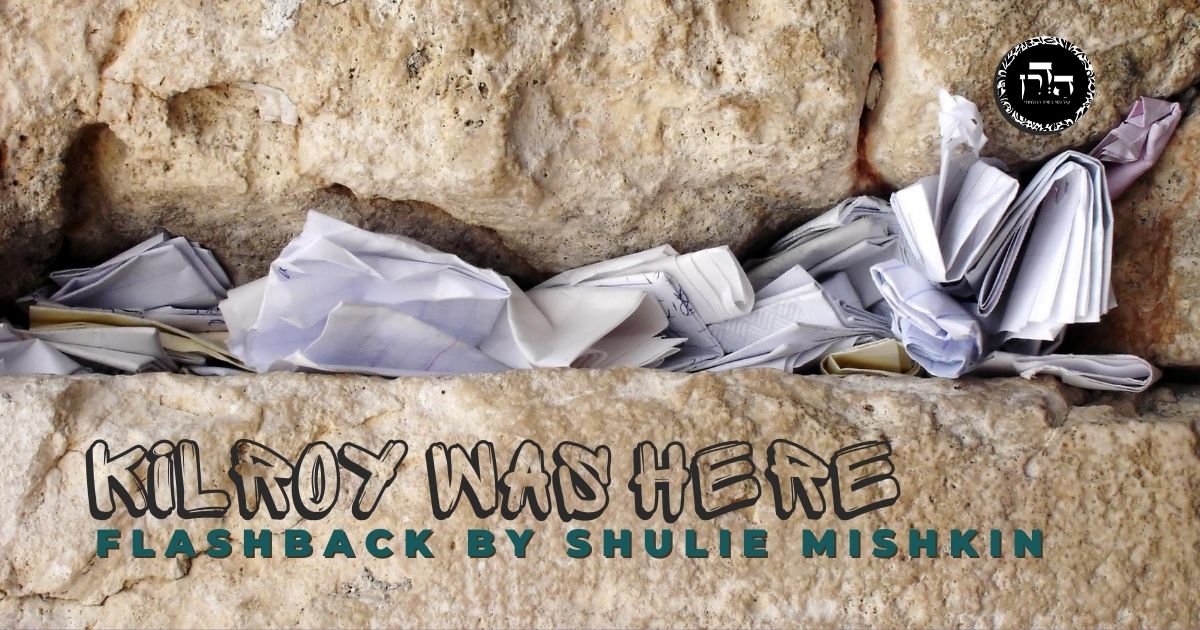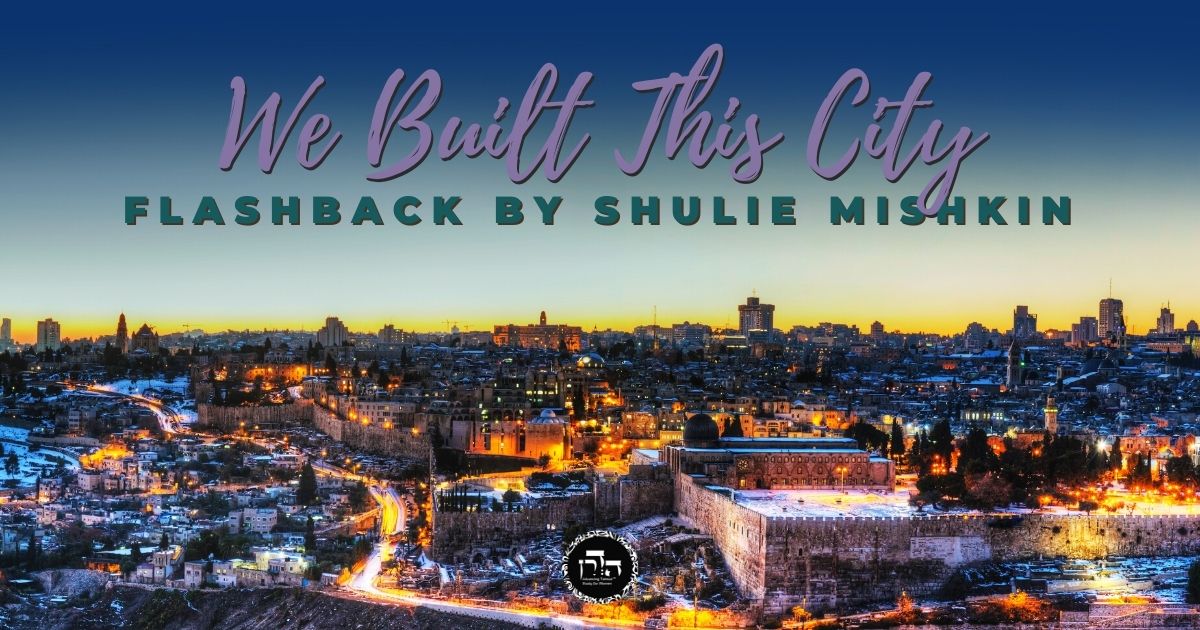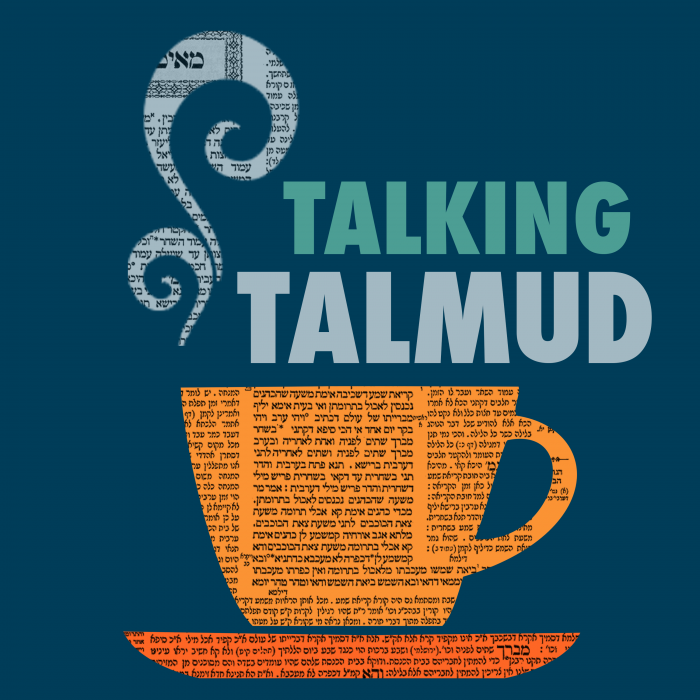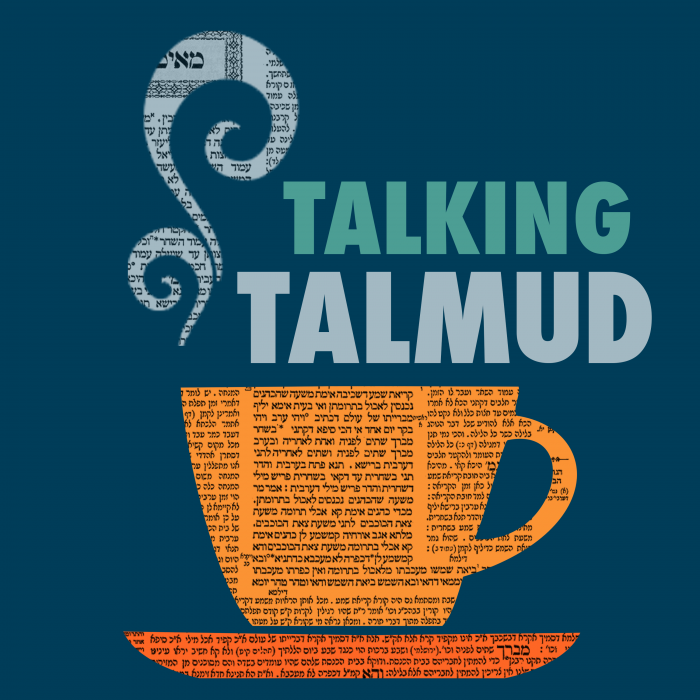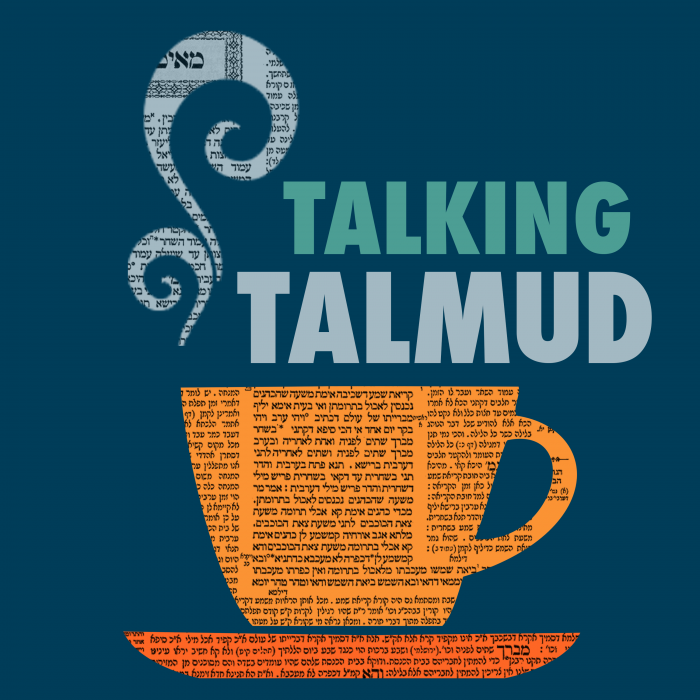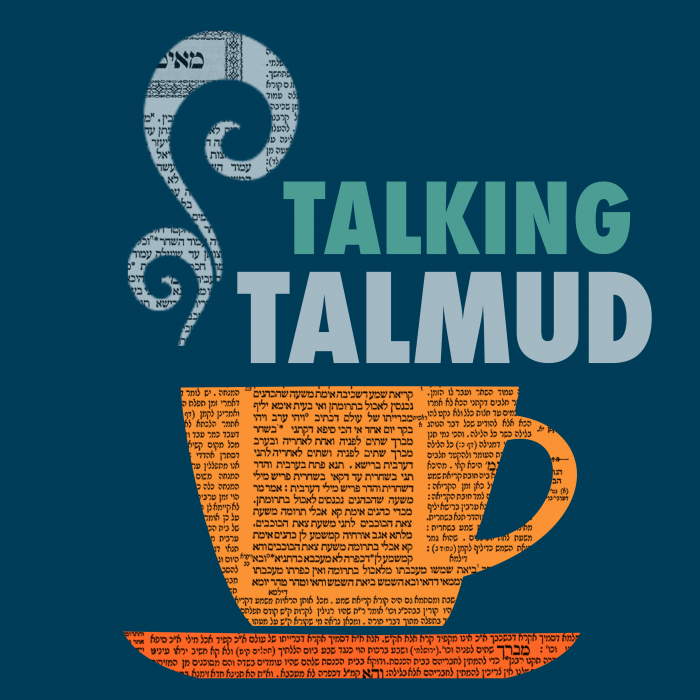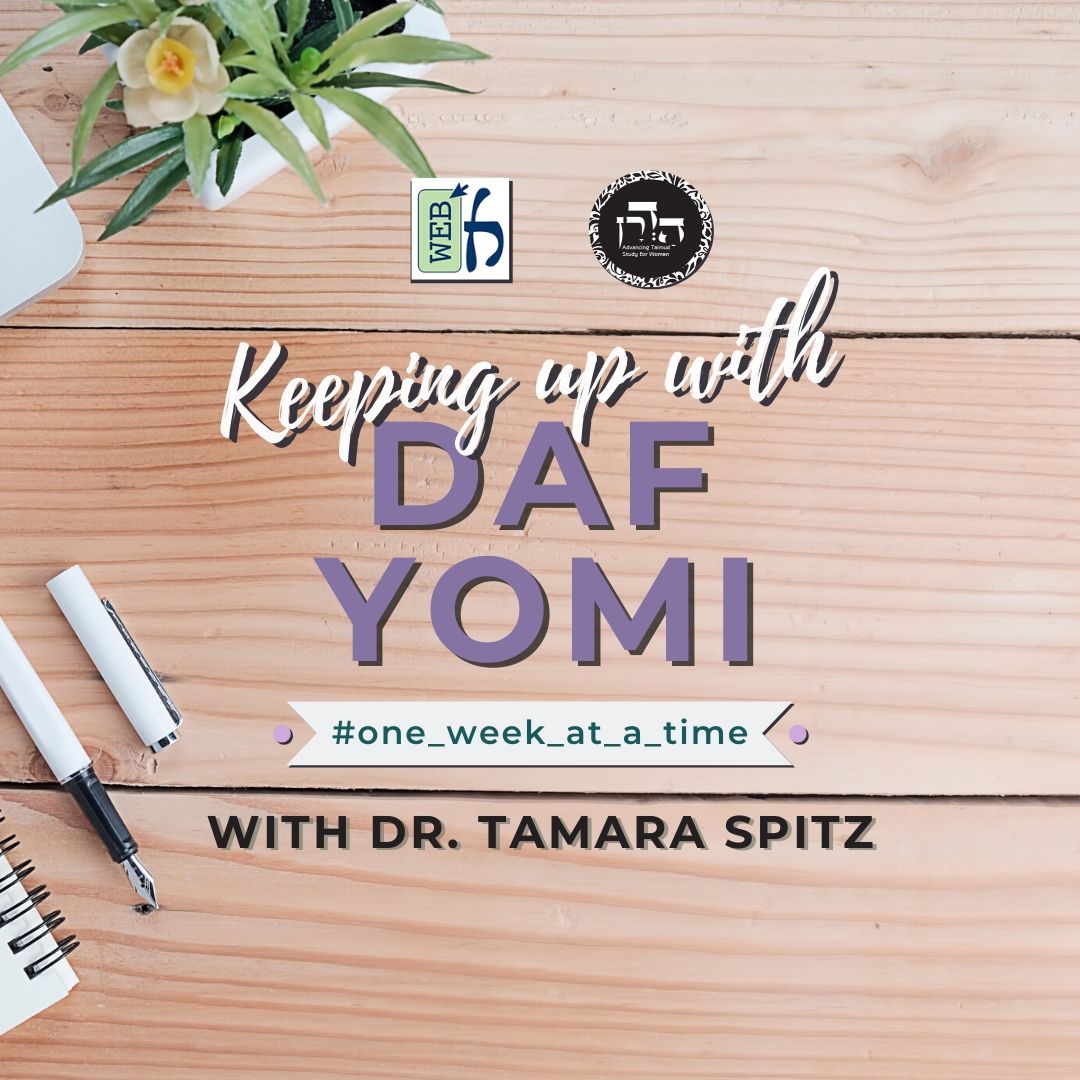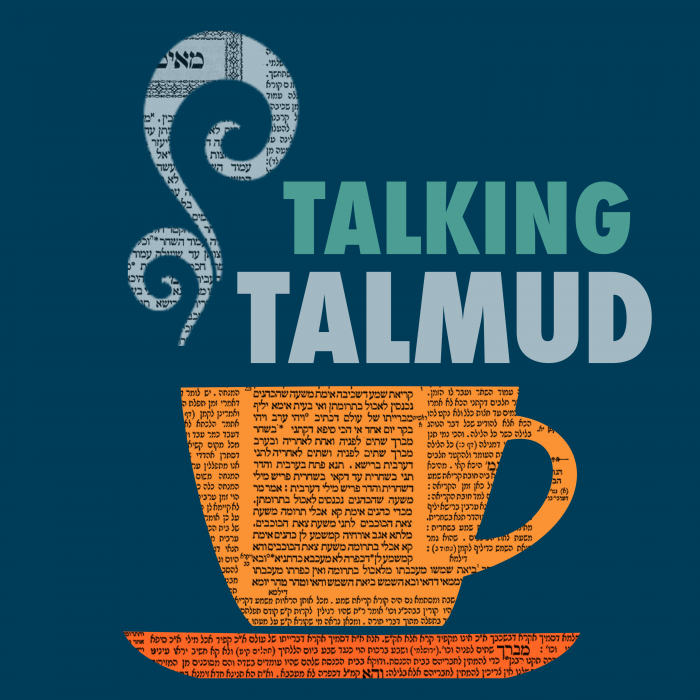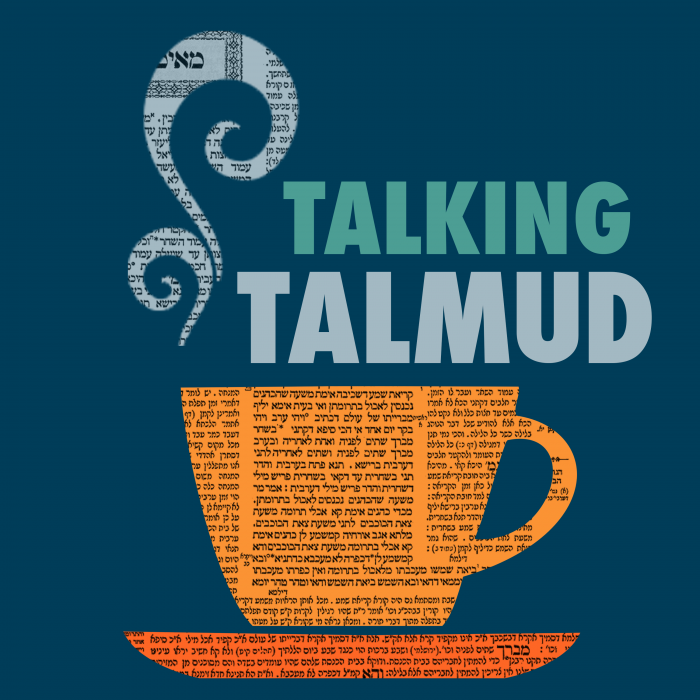Shabbat 66
וְרַבִּי יוֹסֵי אוֹסֵר.
And Rabbi Yosei prohibits going out into the public domain with the wooden leg, since he does not consider it to have the legal status of a shoe.
וְאִם יֵשׁ לוֹ בֵּית קִיבּוּל כְּתִיתִין — טָמֵא.
And if the wooden leg has a receptacle for pads, a concave space at the top of the leg into which pads are placed to cushion the amputated leg, it assumes the status of a wooden vessel and can become ritually impure.
סָמוֹכוֹת שֶׁלּוֹ טְמֵאִין מִדְרָס, וְיוֹצְאִין בָּהֶן בְּשַׁבָּת, וְנִכְנָסִין בָּהֶן בָּעֲזָרָה.
And his supports, which are shoes that one who had both of his feet amputated places on his knees in order to walk on his knees, if a zav wears them, they are subject to ritual impurity imparted by treading. A zav is a primary source of ritual impurity. If he touches a vessel it assumes first-degree ritual impurity status. However, vessels on which he treads, sits, lies, or leans become primary sources of ritual impurity, provided they are designated for that purpose. These supports are vessels designated for treading. And one may go out with them into the public domain on Shabbat since they have the legal status of shoes. And one may enter the Temple courtyard with them. Although, generally, wearing shoes in the Temple courtyard is prohibited, in this regard, the supports do not have the legal status of shoes.
כִּסֵּא וְסָמוֹכוֹת שֶׁלּוֹ טְמֵאִין מִדְרָס, וְאֵין יוֹצְאִין בָּהֶן בְּשַׁבָּת, וְאֵין נִכְנָסִין בָּהֶן בַּעֲזָרָה.
However, if one who is crippled to the extent that he cannot walk at all sits on a chair that is attached to him, places supports on his hands, and propels himself along with his hands, his chair and supports are subject to ritual impurity imparted by treading. And one may not go out with them on Shabbat, and one may not enter the Temple courtyard with them.
לוּקַטְמִין טְהוֹרִין, וְאֵין יוֹצְאִין בָּהֶן.
Loketamin, which will be explained in the Gemara, are ritually pure in the sense that they cannot become ritually impure because they are not vessels, and one may not go out with them on Shabbat.
גְּמָ׳ אֲמַר לֵיהּ רָבָא לְרַב נַחְמָן: הֵיכִי תְּנַן? אֲמַר לֵיהּ: לָא יָדַעְנָא. הִילְכְתָא מַאי? אֲמַר לֵיהּ: לָא יָדַעְנָא.
GEMARA: Rava said to Rav Naḥman: How did we learn the dispute in our mishna? Does Rabbi Meir rule that the amputee may go out with a wooden leg and foot and Rabbi Yosei prohibits him from doing so? Or is it Rabbi Meir who prohibited him from doing so, and Rabbi Yosei’s opinion is the lenient one? Rav Naḥman said to him: I don’t know. And Rava asked: What is the halakha in this matter? Rav Naḥman said to him: I don’t know.
אִיתְּמַר, אָמַר שְׁמוּאֵל: ״אֵין הַקִּיטֵּעַ״, וְכֵן אָמַר רַב הוּנָא: ״אֵין הַקִּיטֵּעַ״. אָמַר רַב יוֹסֵף: הוֹאִיל וְאָמַר שְׁמוּאֵל ״אֵין הַקִּיטֵּעַ״ וְאָמַר רַב הוּנָא ״אֵין הַקִּיטֵּעַ״ — אֲנַן נָמֵי נִיתְנֵי ״אֵין הַקִּיטֵּעַ״.
It was stated: Shmuel said that the correct reading of the mishna is: An amputee may not go out, and Rabbi Yosei permits him to do so. And, likewise, Rav Huna said that the correct reading of the mishna is: An amputee may not. Rav Yosef said: Since Shmuel said that the correct reading of the mishna is: An amputee may not, and Rav Huna said: An amputee may not, we will also learn the mishna: An amputee may not.
מַתְקִיף לַהּ רָבָא בַּר שִׁירָא: לָא שְׁמִיעַ לְהוּ הָא דְּמַתְנֵי לֵיהּ רַב חָנָן בַּר רָבָא לְחִיָּיא בַּר רַב קַמֵּיהּ דְּרַב בְּקִיטוֹנָא דְבֵי רַב? אֵין הַקִּיטֵּעַ יוֹצֵא בְּקַב שֶׁלּוֹ — דִּבְרֵי רַבִּי מֵאִיר, וְרַבִּי יוֹסֵי מַתִּיר. וּמַחְוֵי לֵיהּ רַב: אֵיפוֹךְ. אָמַר רַב נַחְמָן בַּר יִצְחָק, וְסִימָנָא: ״סָמֶךְ״ ״סָמֶךְ״.
Rava bar Shira strongly objects to this: And did they not hear that Rav Ḥanan bar Rava taught the mishna to Ḥiyya bar Rav before Rav in a small room [kituna] in the school of Rav: An amputee may not go out on Shabbat with his wooden leg; this is the statement of Rabbi Meir. And Rabbi Yosei permits going out with it. And Rav signaled him with a hand gesture to reverse the opinions, Rabbi Meir permits going out and Rabbi Yosei prohibits doing so. Rav Naḥman bar Yitzḥak said: And the mnemonic to remember which tanna permits and which tanna prohibits is samekh samekh. The letter samekh appears both in the name Yosei and in the Hebrew word for prohibits [oser]. In that way, one remembers that Rabbi Yosei is the one who prohibits it.
וְאַף שְׁמוּאֵל הֲדַר בֵּיהּ. דִּתְנַן: חָלְצָה בְּסַנְדָּל שֶׁאֵינוֹ שֶׁלּוֹ, בְּסַנְדָּל שֶׁל עֵץ, אוֹ שֶׁל שְׂמֹאל בְּיָמִין — חֲלִיצָה כְּשֵׁרָה.
The Gemara comments: And even Shmuel, who said that the correct reading of the mishna is: An amputee may not, and Rabbi Yosei permits it, reversed his opinion. As we learned in a mishna: The ḥalitza ceremony, which frees a childless widow from the obligation to enter into levirate marriage with her brother-in-law, involves the widow removing her brother-in-law’s sandal from his foot. If she removed a sandal that is not his, or a wooden sandal, or the sandal of the left foot that was on his right foot, the ḥalitza is valid.
וְאָמְרִינַן: מַאן תַּנָּא? אָמַר שְׁמוּאֵל: רַבִּי מֵאִיר הִיא, דִּתְנַן: הַקִּיטֵּעַ יוֹצֵא בְּקַב שֶׁלּוֹ — דִּבְרֵי רַבִּי מֵאִיר, רַבִּי יוֹסֵי אוֹסֵר.
And we said: Who is the tanna who holds that a wooden sandal is considered a shoe for this purpose? Shmuel said: It is Rabbi Meir, as we learned in a mishna: An amputee may go out with his wooden leg, this is the statement of Rabbi Meir, and Rabbi Yosei prohibits doing so. Ultimately, Shmuel accepted Rav’s reading of the mishna.
וְאַף רַב הוּנָא הֲדַר בֵּיהּ, דְּתַנְיָא: סַנְדָּל שֶׁל סַיָּידִין טָמֵא מִדְרָס, וְאִשָּׁה חוֹלֶצֶת בּוֹ, וְיוֹצְאִין בּוֹ בְּשַׁבָּת — דִּבְרֵי רַבִּי עֲקִיבָא, וְלֹא הוֹדוּ לוֹ.
And Rav Huna also reversed his opinion, as it was taught in a baraita: With regard to a plasterers’ sandal worn by those who work with lime and would cover their leather shoes with a shoe woven from straw or reeds so that the leather shoes would not get ruined by the lime. If the plasterer is a zav and walks with his shoes covered, the shoe covering is subject to ritual impurity imparted by treading, as the legal status of that sandal is that of a shoe. A woman may perform ḥalitza with it, and one may go out with it on Shabbat; this is the statement of Rabbi Akiva. And the Rabbis did not agree with him.
וְהָתַנְיָא ״הוֹדוּ לוֹ״! אָמַר רַב הוּנָא: מַאן ״הוֹדוּ לוֹ״ — רַבִּי מֵאִיר, וּמַאן ״לֹא הוֹדוּ לוֹ״ — רַבִּי יוֹסֵי.
The Gemara asks: Wasn’t it taught in a baraita that they agreed with him? Rav Huna said in resolution of this apparent contradiction: Who is the Sage whose opinion is referred to in the phrase: They agreed with him? It is Rabbi Meir. And who is the Sage whose opinion is referred to in the phrase: They did not agree with him? It is Rabbi Yosei. Even Rav Huna accepted Rav’s reading of the mishna that Rabbi Yosei prohibits going out with a wooden leg.
אָמַר רַב יוֹסֵף: מַאן ״לֹא הוֹדוּ לוֹ״ — רַבִּי יוֹחָנָן בֶּן נוּרִי. דִּתְנַן: כַּוֶּרֶת שֶׁל קַשׁ וּשְׁפוֹפֶרֶת שֶׁל קָנִים — רַבִּי עֲקִיבָא מְטַמֵּא, וְרַבִּי יוֹחָנָן בֶּן נוּרִי מְטַהֵר.
Rav Yosef said: Who is the Sage whose opinion is referred to in the phrase: They did not agree with Rabbi Akiva? It is Rabbi Yoḥanan ben Nuri. As we learned in a mishna: A receptacle made of straw and a tube made of reeds, Rabbi Akiva deems these vessels capable of becoming ritually impure, and Rabbi Yoḥanan ben Nuri deems them pure, i.e., incapable of becoming ritually impure because they are not vessels. According to Rabbi Yoḥanan ben Nuri, straw objects are not considered vessels fit for use.
אָמַר מָר: סַנְדָּל שֶׁל סַיָּידִין טָמֵא מִדְרָס. הָא לָאו לְהִילּוּכָא עֲבִיד! אָמַר רַב אַחָא בַּר רַב עוּלָּא: שֶׁכֵּן הַסַּיָּיד מְטַיֵּיל בּוֹ עַד שֶׁמַּגִּיעַ לְבֵיתוֹ.
It was taught in a baraita that the Master said: A plasterers’ sandal is subject to ritual impurity imparted by treading. The Gemara asks: How could that be? These sandals are not made for walking. Rav Aḥa bar Rav Ulla said: They are used for walking, as, at times, the plasterer walks in them until he reaches his house.
וְאִם יֵשׁ לוֹ בֵּית קִיבּוּל כְּתִיתִין — טָמֵא. אָמַר אַבָּיֵי: טָמֵא טוּמְאַת מֵת, וְאֵין טָמֵא מִדְרָס. רָבָא אָמַר: אַף טָמֵא מִדְרָס.
We learned in the mishna: And if the wooden leg has a receptacle for pads, it is capable of becoming ritually impure. Abaye said: It is subject to ritual impurity due to contact with ritual impurity imparted by a corpse, and it is not subject to ritual impurity imparted by treading. If a zav uses a wooden leg it merely assumes first-degree ritual impurity status, since he cannot lean all his weight on it. Rava said: The artificial foot is even subject to ritual impurity imparted by treading.
אָמַר רָבָא: מְנָא אָמֵינָא לַהּ — דִּתְנַן: עֲגָלָה שֶׁל קָטָן — טְמֵאָה מִדְרָס. וְאַבָּיֵי אֲמַר: הָתָם סָמֵיךְ עִילָּוֵיהּ, הָכָא לָא סָמֵיךְ עִילָּוֵיהּ.
Rava said: From where do I derive to say this halakha? As we learned in a mishna: The wagon of a small child utilized to teach him to walk (Tosafot) is subject to ritual impurity imparted by treading, since its purpose is to lean on it. And Abaye said: The two cases are not comparable. There, in the case of the wagon, he leans all his weight on it; here, in the case of the wooden leg, he does not lean all his weight on it.
אָמַר אַבָּיֵי: מְנָא אָמֵינָא לַהּ — דְּתַנְיָא: מַקֵּל שֶׁל זְקֵנִים טָהוֹר מִכְּלוּם!
Abaye said: From where do I derive to say this halakha? As it was taught in a baraita: A walking stick, typically used by the elderly, is pure, i.e., incapable of becoming ritually impure from any form of ritual impurity. Apparently, an object upon which one does not lean all his weight is not subject to ritual impurity imparted by treading.
וְרָבָא: הָתָם
And how does Rava respond to this proof? He says that there is a distinction between the cases: There, in the case of a walking stick used by the elderly,
לְתָרוֹצֵי סוּגְיָא עֲבִידָא, הָכָא — לִסְמוֹךְ עִילָּוֵיהּ הוּא דַּעֲבִידָא, וְסָמֵיךְ עֲלֵיהּ.
it is made merely to align his steps and straighten his posture. He does not completely lean all his weight on it. Here, in the case of a wooden leg, it is made to lean on, and in fact he leans all his weight on it.
טְמֵאִין מִדְרָס, וְאֵין יוֹצְאִין בָּהֶן בְּשַׁבָּת, וְאֵין נִכְנָסִין בָּהֶן לָעֲזָרָה.
It was taught in the mishna that the supports of a zav and his chair are subject to ritual impurity imparted by treading, and one may not go out with them on Shabbat, and one may not enter into the Temple courtyard with them.
תָּנֵי תַּנָּא קַמֵּיהּ דְּרַבִּי יוֹחָנָן: ״נִכְנָסִין בָּהֶן לָעֲזָרָה״.
The tanna, who recited mishnayot before Rabbi Yoḥanan, taught the opposite halakha in the mishna: One may enter into the Temple courtyard with them.
אֲמַר לֵיהּ: אֲנִי שׁוֹנֶה ״אִשָּׁה חוֹלֶצֶת בּוֹ״, וְאַתְּ אָמְרַתְּ ״נִכְנָסִין״?! תְּנִי ״אֵין נִכְנָסִין בָּהֶן לָעֲזָרָה״.
Rabbi Yoḥanan said to him: I teach that a woman may perform ḥalitza with this support, as it has the legal status of a shoe in every sense, and you say that one may enter the Temple courtyard? Teach the mishna in the following manner: One may not enter into the Temple courtyard with them.
לוּקַטְמִין טְהוֹרָה. מַאי לוּקַטְמִין? אָמַר רַבִּי אֲבָהוּ: חֲמָרָא דְּאַכַּפָּא. רָבָא בַּר פָּפָּא אָמַר: קִישְׁרֵי. רָבָא בַּר רַב הוּנָא אָמַר: פְּרָמֵי.
We learned in the mishna that loketamin are pure. The Gemara asks: What are loketamin? Rabbi Abbahu said: They are wooden toys in the shape of a donkey one carried on the shoulders, creating the impression that the donkey is riding him. Rava bar Pappa said: They are stilts used to avoid getting dirty when walking in mud or for amusement. Rava bar Rav Huna said: They are masks [peramei].
מַתְנִי׳ הַבָּנִים יוֹצְאִין בִּקְשָׁרִים וּבְנֵי מְלָכִים בְּזוֹגִין, וְכׇל אָדָם — אֶלָּא שֶׁדִּבְּרוּ חֲכָמִים בַּהוֹוֶה.
MISHNA: Young boys may go out on Shabbat with knots as a folk remedy and princes with bells. And any person is permitted to go out on Shabbat with those objects; however, the Sages spoke in the present, addressing situations that were prevalent.
גְּמָ׳ מַאי קְשָׁרִים? אָמַר אַדָּא מָרִי אָמַר רַב נַחְמָן בַּר בָּרוּךְ אָמַר רַב אָשֵׁי בַּר אָבִין אָמַר רַב יְהוּדָה: קִשּׁוּרֵי פוּאָה.
GEMARA: We learned in the mishna that young boys may go out on Shabbat with knots. The Gemara asks: What are these knots? Adda Mari said that Rav Naḥman bar Barukh said that Rav Ashi bar Avin said that Rav Yehuda said: They are garlands of the madder plant that are tied for their medicinal qualities.
אָמַר אַבָּיֵי, אֲמַרָה לִי אֵם: תְּלָתָא — מוֹקְמִי, חֲמִשָּׁה — מַסּוּ, שִׁבְעָה — אֲפִילּוּ לִכְשָׁפִים מְעַלּוּ.
Abaye said: Mother, actually his foster mother, said to me about the healing properties of madder: Three garlands maintain the illness at its present state and prevent it from worsening, five garlands heal the illness, and seven are effective even against sorcery.
אָמַר רַב אַחָא בַּר יַעֲקֹב: וְהוּא דְּלָא חֲזִי לֵיהּ שִׁמְשָׁא וְסֵיהֲרָא, וְלָא חֲזִי מִיטְרָא, וְלָא שְׁמִיעַ לֵיהּ קָל בַּרְזְלָא, וְקָל תַּרְנוּגְלָא, וְקָל נִיגְרֵי. אָמַר רַב נַחְמָן בַּר יִצְחָק: נְפַל פּוּתָא בְּבֵירָא.
Rav Aḥa bar Ya’akov said: And that benefit provided by the madder plant is specifically in a case where one on whom the knots were tied does not look at the sun and the moon, and does not see rain, and hears neither the sound of clanging iron, nor the sound of the hen, nor the sound of footsteps. Rav Naḥman bar Yitzḥak said: If that is the case, the remedial powers of the madder fell in a pit, i.e., if so many conditions exist, for all intents and purposes it provides no benefit at all.
מַאי אִירְיָא בָּנִים? אֲפִילּוּ בָּנוֹת נָמֵי! מַאי אִירְיָא קְטַנִּים? אֲפִילּוּ גְּדוֹלִים נָמֵי!
The Gemara asks: If these knots in the madder plant have remedial qualities, why specifically were boys mentioned in the mishna? Even girls can benefit from the cure as well. By the same token, why specifically were young boys mentioned in the mishna? Even adults can benefit from the cure as well.
אֶלָּא מַאי קְשָׁרִים — כִּי הָא דְּאָמַר אָבִין בַּר הוּנָא אָמַר רַבִּי חָמָא בַּר גּוּרְיָא: בֵּן שֶׁיֵּשׁ לוֹ גַּעְגּוּעִין עַל אָבִיו — נוֹטֵל רְצוּעָה מִמִּנְעָל שֶׁל יָמִין וְקוֹשֵׁר לוֹ בִּשְׂמֹאלוֹ. אָמַר רַב נַחְמָן בַּר יִצְחָק: וְסִימָנָיךְ — תְּפִילִּין, וְחִילּוּפָא סַכַּנְתָּא.
Rather, what are these knots? Like that which Avin bar Huna said that Rav Ḥama bar Gurya said: A son who has longings for his father and has a difficult time leaving him, the father takes a strap from the right shoe and ties it on the boy’s left arm as a talisman to help the child overcome his longings. These feelings are more common in small children and especially in boys for their fathers, as fathers were more involved in raising their sons than they were in raising their daughters. Therefore, the Sages allowed specifically young boys to go out with these knots. With regard to this practice, Rav Naḥman bar Yitzḥak said: And your mnemonic for where to tie the strap is phylacteries, which are tied by the right hand on the left arm. And the opposite, tying the strap from the left shoe onto his right arm, is dangerous because it will exacerbate his longings.
אָמַר אָבִין בַּר הוּנָא אָמַר רַב חָמָא בַּר גּוּרְיָא: סַחוֹפֵי כָּסָא אַטִּיבּוּרֵי בְּשַׁבְּתָא — שַׁפִּיר דָּמֵי.
On the topic of the use of various forms of healing and medicinal practices and their permissibility on Shabbat, the Gemara cites additional statements by that Sage on these topics. Avin bar Huna said that Rav Ḥama bar Gurya said: With regard to overturning an empty cup in which there had been hot water and placing it on one’s navel for healing purposes on Shabbat, he may well do so.
וְאָמַר אָבִין בַּר הוּנָא אָמַר רַב חָמָא בַּר גּוּרְיָא: מוּתָּר לָסוּךְ שֶׁמֶן וּמֶלַח בְּשַׁבָּת.
And Avin bar Huna said that Rav Ḥama bar Gurya said: It is permissible to smear oil and salt on oneself on Shabbat.
כִּי הָא דְּרַב הוּנָא מִבֵּי רַב, וְרַב מִבֵּי רַבִּי חִיָּיא, וְרַבִּי חִיָּיא מִבֵּי רַבִּי, כִּי הֲווֹ מִיבַּסְּמִי מַיְיתוּ מִשְׁחָא וּמִילְחָא, וְשָׁיְיפִי לְהוּ לְגַוָּיָיתָא דִּידַיְיהוּ וְגַוָּיָיתָא דְּכַרְעַיְיהוּ, וְאָמְרִי: ״כִּי הֵיכִי דְּצָיֵל הָא מִישְׁחָא לֵיצִיל חַמְרֵיהּ דִּפְלָנְיָא בַּר פְּלָנִיתָא״. וְאִי לָא — מַיְיתֵי שִׁיעָא דְּדַנָּא וְשָׁרֵי לֵיהּ בְּמַיָּא, וְאָמַר: ״כִּי הֵיכִי דְּצָיֵל הַאי שִׁיעָא לֵיצִיל חַמְרֵיהּ דִּפְלָנְיָא בַּר פְּלָנִיתָא״.
As in this case of Rav Huna, who departed from the house of Rav, and Rav, who departed from the house of Rabbi Ḥiyya, and Rabbi Ḥiyya, who departed from the house of Rabbi Yehuda HaNasi, when they were drunk, the rabbi would bring oil and salt and rub them on the palms of their hands and the soles of their feet and say: Just as this oil is clear, so let the wine of so-and-so, son of so-and-so, his mother, become clear. In other words, let them become sober. And if he could not bring oil and salt, or if they did not work, he would bring the sealing clay of a barrel and soak it in water and say: Just as this sealing clay is clear, so let the wine of so-and-so, son of so-and-so, become clear.
וְאָמַר אָבִין בַּר הוּנָא אָמַר רַב חָמָא בַּר גּוּרְיָא: מוּתָּר לֵחָנֵק בְּשַׁבָּת.
And Avin bar Huna said that Rav Ḥama bar Gurya said: It is permitted to strangle, i.e., tightly bandage the neck of one whose vertebra was dislocated in order to reset it, on Shabbat.
וְאָמַר אָבִין בַּר הוּנָא אָמַר רַב חָמָא בַּר גּוּרְיָא: לַפּוֹפֵי יָנוֹקָא בְּשַׁבְּתָא — שַׁפִּיר דָּמֵי.
And Avin bar Huna said that Rav Ḥama bar Gurya said: With regard to tightly swaddling a baby born on Shabbat in order to align any limbs that may have been dislocated in birth, one may well do so.
רַב פָּפָּא מַתְנֵי ״בָּנִים״, רַב זְבִיד מַתְנֵי ״בֵּן״. רַב פָּפָּא מַתְנֵי ״בָּנִים״, וְתַרְוַיְיהוּ מַתְנֵי לְהוּ בְּאָבִין בַּר הוּנָא. רַב זְבִיד מַתְנֵי ״בֵּן״ — קַמַּיְיתָא מַתְנֵי בְּאָבִין בַּר הוּנָא, וְהַאי מַתְנֵי לַהּ בְּרַבָּה בַּר בַּר חָנָה. דְּאָמַר רַבָּה בַּר בַּר חָנָה: לַפּוֹפֵי יָנוֹקָא בְּשַׁבְּתָא — שַׁפִּיר דָּמֵי.
There were different versions with regard to the halakhot of Avin bar Huna. Rav Pappa taught two halakhot with regard to children in his name and Rav Zevid taught one halakha with regard to a child in his name. The Gemara explains: Rav Pappa taught two halakhot with regard to children, and he taught both of them in the name of Avin bar Huna, i.e., the halakha with regard to knots and the halakha with regard to swaddling. Rav Zevid taught one halakha with regard to a child. The first, with regard to knots, he taught in the name of Avin bar Huna. And this, with regard to swaddling, he taught in the name of Rabba bar bar Ḥana, as Rabba bar bar Ḥana said: With regard to tightly swaddling a baby on Shabbat, one may well do so.
אָמַר אַבָּיֵי, אֲמַרָה לִי אֵם: כֹּל מִנְיָינֵי — בִּשְׁמָא דְאִימָּא, וְכֹל קִטְרֵי — בִּשְׂמָאלָא.
The Gemara cites additional statements said by Abaye in the name of the woman who raised him with regard to remedies. Abaye said, Mother said to me: All incantations that are repeated are intoned using the name of the mother of the one requiring the incantation, and all knots tied for the purpose of healing are tied on the left.
וְאָמַר אַבָּיֵי, אֲמַרָה לִי אֵם: כֹּל מִנְיָינֵי דְּמִפָּרְשִׁי — כִּדְמִפָּרְשִׁי, וּדְלָא מִפָּרְשִׁי — אַרְבְּעִין וְחַד זִימְנֵי.
And Abaye said, Mother said to me: All incantations for which the number of times they must be intoned is specified, one recites them as they are specified; and those for which the number of times they must be intoned is not specified, one recites them forty-one times.
תָּנוּ רַבָּנַן: יוֹצְאִין בְּאֶבֶן תְּקוּמָה בְּשַׁבָּת. מִשּׁוּם רַבִּי מֵאִיר אָמְרוּ: אַף בְּמִשְׁקַל אֶבֶן תְּקוּמָה. וְלֹא שֶׁהִפִּילָה, אֶלָּא שֶׁמָּא תַּפִּיל. וְלֹא שֶׁעִיבְּרָה, אֶלָּא שֶׁמָּא תִּתְעַבֵּר וְתַפִּיל. אָמַר רַב יֵימַר בַּר שֶׁלֶמְיָא מִשְּׁמֵיהּ דְּאַבָּיֵי: וְהוּא דְּאִיכַּוַּון וְאִיתְּקַל. בָּעֵי אַבָּיֵי: מִשְׁקָל דְּמִשְׁקָל מַאי? תֵּיקוּ.
The Sages taught in a baraita: One may go out with a preservation stone, which prevent miscarriages, on Shabbat. They said in the name of Rabbi Meir that one may go out even with the counterweight of a preservation stone; i.e., a stone or another object that was weighed against and found equivalent to the weight of the preservation stone, which is also effective. And this leniency applies not only to a woman who miscarried in the past and is concerned that she may miscarry again; rather, it applies even to a woman who never miscarried and is concerned lest she miscarry for the first time. And it applies not only to a woman who is aware that she is pregnant; rather, it applies even if a woman suspects that she may become pregnant and miscarry. Rav Yeimar bar Shelamya said in the name of Abaye: And this applies only when he happened upon an object that was found equal to the preservation stone when he weighed it against that stone, not when one alters the object to equal the weight of the preservation stone. Abaye raised a dilemma: With regard to a counterweight to the counterweight, i.e., one who finds an object and determines its weight by weighing it against the counterweight of the preservation stone, what is its legal status? May a woman go out into the public domain with it? The Gemara concludes: Let this dilemma stand unresolved.
וְאָמַר אַבָּיֵי, אֲמַרָה לִי אֵם: לְאִשָּׁתָא בַּת יוֹמָא — לִישְׁקוֹל זוּזָא חִיוּוֹרָא, וְלֵיזִיל לְמִלְחֲתָא, וְלִיתְקוֹל מַתְקָלֵיהּ מִילְחָא, וְלִצְיְירֵיהּ בַּחֲלָלָא דְבֵי צַוָּאר בְּנִירָא בַּרְקָא.
And Abaye said, Mother said to me: To heal a fever of one day, let one take a pale, i.e., newly minted, dinar and go to the salt pools, and weigh its weight in salt against it, and let him bind the salt to the opening of the neckline of his garment with a thread made of hair.
וְאִי לָא — לִיתֵּיב אַפָּרָשַׁת דְּרָכִים, וְכִי חָזֵי שׁוּמְשְׁמָנָא גַּמְלָא דְּדָרֵי מִידֵּי, לִישְׁקְלֵיהּ וְלִישְׁדְּיֵיהּ בְּגוּבְתָּא דִנְחָשָׁא, וְלִיסְתְּמֵיהּ בַּאֲבָרָא, וְלִיחְתְּמֵיהּ בְּשִׁיתִּין גּוּשְׁפַּנְקֵי, וּלְבַרְזוֹלֵיהּ, וְלִידְרֵיהּ, וְלֵימָא לֵיהּ: ״טְעוּנָךְ עֲלַי וּטְעוּנַאי עֲלָךְ״. אֲמַר לֵיהּ רַב אַחָא בְּרֵיהּ דְּרַב הוּנָא לְרַב אָשֵׁי: וְדִילְמָא אִינִישׁ אַשְׁכְּחֵיהּ וְאִיפְּסִק בֵּיהּ? אֶלָּא לֵימָא לֵיהּ: ״טְעוּנַאי וּטְעוּנָךְ עֲלָךְ״.
And if this remedy is not effective, let him sit at a crossroads, and when he sees a large ant carrying something, he should take the ant and place it in a copper tube, and close it with lead, and seal it with sixty seals, and shake it, and lift it, and say to it: Your burden is upon me and my burden, my fever, is upon you. Rav Aḥa, son of Rav Huna, said to Rav Ashi: And perhaps a different person already found this ant and used this remedy to end his illness. In that case, by accepting the burden of the ant, he is bringing another’s illness upon himself. Rather, let him say to the ant: My burden and your burden are upon you.
וְאִי לָא, לִישְׁקוֹל כּוּזָא חַדְתָּא, וְלֵיזִיל לְנַהְרָא, וְלֵימָא לֵיהּ: ״נַהֲרָא נַהֲרָא, אוֹזְפַן כּוּזָא דְמַיָּא לְאוֹרְחָא דְּאִיקְּלַע לִי״. וְלַיהְדַּר שָׁב זִימְנֵי עַל רֵישֵׁיהּ, וְלִשְׁדְּיֵיהּ לַאֲחוֹרֵיהּ, וְלֵימָא לֵיהּ: ״נַהֲרָא נַהֲרָא, שְׁקוֹל מַיָּא דִּיהַבְתְּ לִי, דְּאוֹרְחָא דְּאִיקְּלַע לִי בְּיוֹמֵיהּ אֲתָא וּבְיוֹמֵיהּ אֲזַל״.
And if that remedy is not effective, let him take a new jug, and go to the river, and say to it: River, river, lend me a jug of water for a guest who happened to come to me. And let him turn it around his head seven times, and pour out the water behind him, and say to it: River, river, take back the water that you gave me because the guest who happened to come to me came on its day and left on its day.
אָמַר רַב הוּנָא:
Rav Huna said:



